Vivek Vijaykumar
We're Not Using Videos Effectively: An Updated Domain Adaptive Video Segmentation Baseline
Feb 06, 2024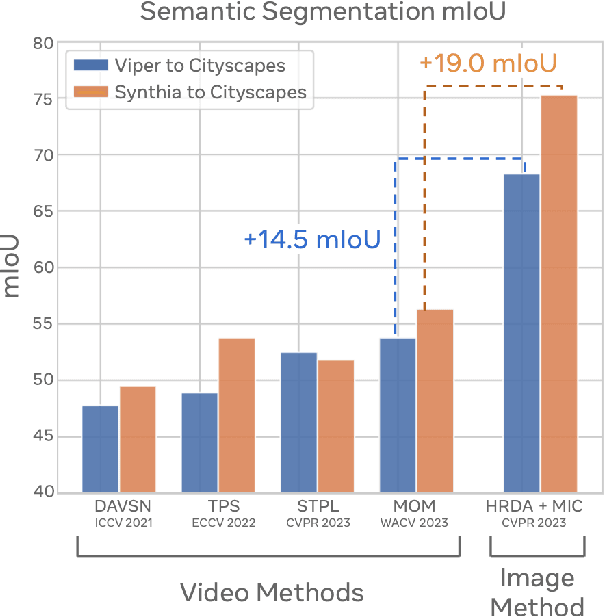

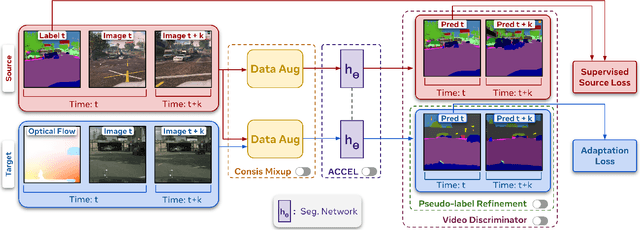

Abstract:There has been abundant work in unsupervised domain adaptation for semantic segmentation (DAS) seeking to adapt a model trained on images from a labeled source domain to an unlabeled target domain. While the vast majority of prior work has studied this as a frame-level Image-DAS problem, a few Video-DAS works have sought to additionally leverage the temporal signal present in adjacent frames. However, Video-DAS works have historically studied a distinct set of benchmarks from Image-DAS, with minimal cross-benchmarking. In this work, we address this gap. Surprisingly, we find that (1) even after carefully controlling for data and model architecture, state-of-the-art Image-DAS methods (HRDA and HRDA+MIC) outperform Video-DAS methods on established Video-DAS benchmarks (+14.5 mIoU on Viper$\rightarrow$CityscapesSeq, +19.0 mIoU on Synthia$\rightarrow$CityscapesSeq), and (2) naive combinations of Image-DAS and Video-DAS techniques only lead to marginal improvements across datasets. To avoid siloed progress between Image-DAS and Video-DAS, we open-source our codebase with support for a comprehensive set of Video-DAS and Image-DAS methods on a common benchmark. Code available at https://github.com/SimarKareer/UnifiedVideoDA
PASTA: Proportional Amplitude Spectrum Training Augmentation for Syn-to-Real Domain Generalization
Dec 02, 2022



Abstract:Synthetic data offers the promise of cheap and bountiful training data for settings where lots of labeled real-world data for tasks is unavailable. However, models trained on synthetic data significantly underperform on real-world data. In this paper, we propose Proportional Amplitude Spectrum Training Augmentation (PASTA), a simple and effective augmentation strategy to improve out-of-the-box synthetic-to-real (syn-to-real) generalization performance. PASTA involves perturbing the amplitude spectrums of the synthetic images in the Fourier domain to generate augmented views. We design PASTA to perturb the amplitude spectrums in a structured manner such that high-frequency components are perturbed relatively more than the low-frequency ones. For the tasks of semantic segmentation (GTAV to Real), object detection (Sim10K to Real), and object recognition (VisDA-C Syn to Real), across a total of 5 syn-to-real shifts, we find that PASTA outperforms more complex state-of-the-art generalization methods while being complementary to the same.
Self-Supervised Pretraining Improves Self-Supervised Pretraining
Mar 25, 2021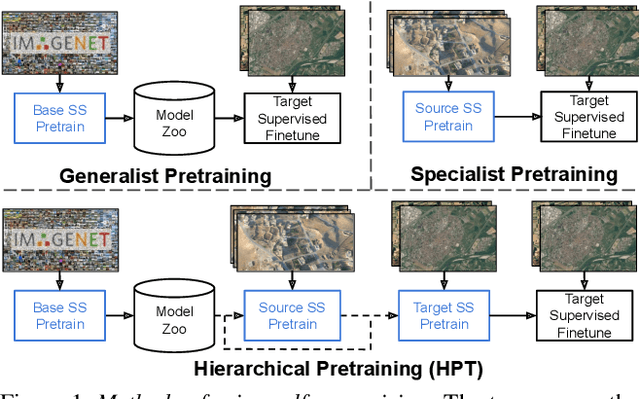
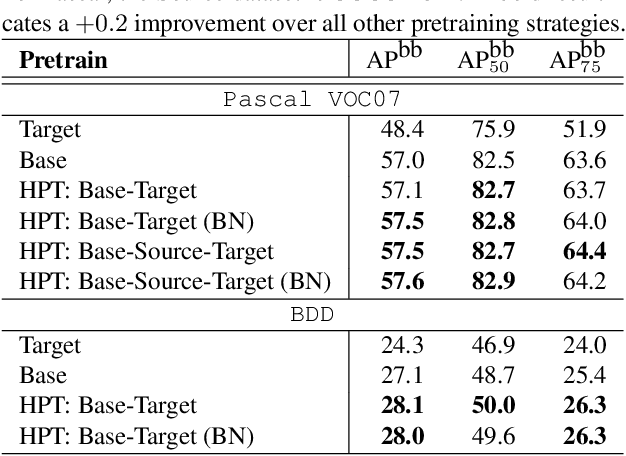
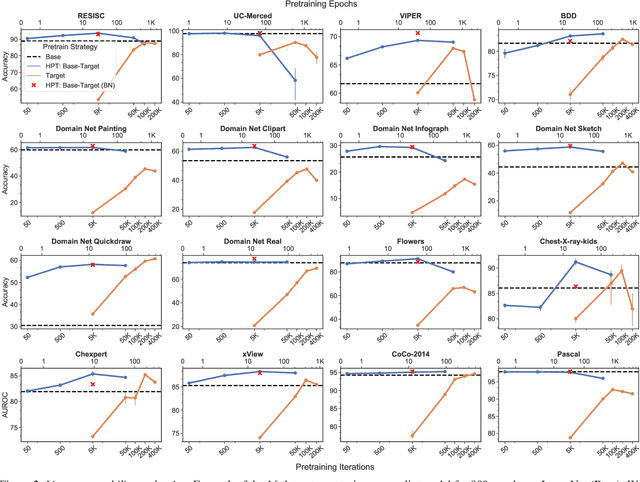

Abstract:While self-supervised pretraining has proven beneficial for many computer vision tasks, it requires expensive and lengthy computation, large amounts of data, and is sensitive to data augmentation. Prior work demonstrates that models pretrained on datasets dissimilar to their target data, such as chest X-ray models trained on ImageNet, underperform models trained from scratch. Users that lack the resources to pretrain must use existing models with lower performance. This paper explores Hierarchical PreTraining (HPT), which decreases convergence time and improves accuracy by initializing the pretraining process with an existing pretrained model. Through experimentation on 16 diverse vision datasets, we show HPT converges up to 80x faster, improves accuracy across tasks, and improves the robustness of the self-supervised pretraining process to changes in the image augmentation policy or amount of pretraining data. Taken together, HPT provides a simple framework for obtaining better pretrained representations with less computational resources.
 Add to Chrome
Add to Chrome Add to Firefox
Add to Firefox Add to Edge
Add to Edge